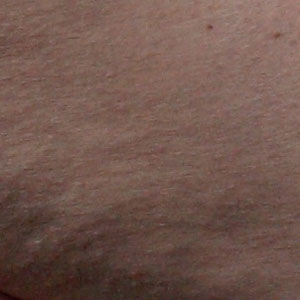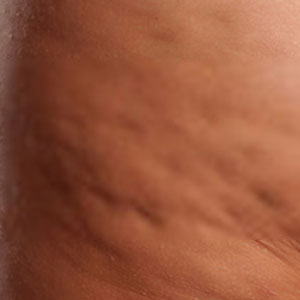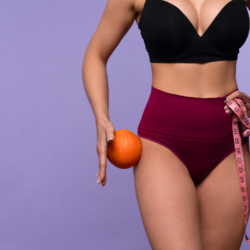Often confused with cellulite, water retention causes swelling. With the arrival of warmer weather, water retention and cellulite become a major problem for many women. But we can’t tackle this problem without analysing the causes of their appearance.
What’s the difference between cellulite and water retention?
Under our skin, we have a panniculus of adipose layer supported by reticular tissue and collagen, and vascularised by the microcirculation which supplies (or subtracts) energy in the form of fat to the body, according to its needs. However, the physiological balance can sometimes be upset by exogenous factors.
In such cases, the adipose tissue cells break down and release triglycerides into the intercellular spaces, compressing the microcirculation network and severely impairing its efficiency, leading to oedema and ‘orange peel’ skin. The circulatory and lymphatic systems also have the task of draining liquids and metabolic waste products. Impairment of these systems facilitates the retention of liquids and toxins in the tissues and, consequently, inflammatory processes in the adipose tissue. People with cellulite often also have peripheral circulatory problems such as venous insufficiency with insufficient lymphatic drainage. Water retention can also affect the presence of cellulite.
What is cellulite?

The mechanisms behind the appearance of this form of cellulite, which results from a build-up of fat (adipocytes) in the subcutaneous tissues, are well known. This condition mainly affects women and may be the result of one or more factors, the most common of which are: heredity, excessive calorie intake (too much food or a diet too rich in carbohydrates and fats), hormonal imbalances (particularly too much oestrogen), inadequate venous and/or lymphatic circulation.
It’s worth noting, even if it’s not very good for morale, that moderate cellulite, also known as physiological cellulite, affects around 95% of women. It first appears at puberty, in its firm, sensitive form, with skin that gradually becomes red and grainy on the thighs and buttocks. From late adolescence to the menopause, cellulite becomes soft and flabby, with the formation of subcutaneous lumps. This is known as dimpling or orange peel skin.
Of course, there is a genetic predisposition (hereditary) but obesity and overweight are also considered by many to be a major risk factor and, in fact, although slim women are not exempt from this pathology, they still have more limited manifestations. In particular, we’re talking about swollen, painful legs where accumulated fluids cannot rise to the top and stagnate in the lower limbs.
What is water retention?

Water retention is not synonymous with cellulite, but it is certainly a condition that can contribute to its appearance. Water retention is an imbalance between the venous and lymphatic systems and is characterised by the presence of widespread subcutaneous oedema, due to insufficient drainage of liquids, encouraged by the cells’ tendency to retain liquids, toxins and mineral salts.
Water retention is usually caused by an imbalance between two specific mineral salts, potassium and sodium, which aggravate the poor efficiency of the lymphatic system in its activity, also affecting the upper limbs and abdominal area. The causes that determine the onset of water retention are generally linked to poor nutrition and a sedentary lifestyle. If, in addition to microcirculation problems, real cellulite is added, this is a sign that other factors may also be at play: hormonal imbalances (such as excess oestrogen), taking medication (such as oral contraceptives), periods of severe stress and nervousness.
Some naturopathic advice to avoid water retention
- Engage in healthy physical activity, which promotes circulation and metabolism
- Adopt a targeted, balanced diet
- Opt for draining massages
Nutrition plays a fundamental role in this imbalance, both as a causal factor and as a possible remedy. It is therefore important to establish whether oedematous swelling is linked to poor eating habits and/or excess weight, in order to take action. For example, excess sodium increases water retention, as does excessive calorie intake.
- Reduce refined flours and carbohydrates
- Eliminate alcohol
- Reduce dairy products
- Avoid excess saturated and trans fats
From a dietary point of view, it is a good idea to seek the help of a competent food specialist to establish the true calorie balance and the choice of an appropriate dietary approach to support microcirculation, the reduction of the inflammatory state and an efficient metabolism.
Which medicinal plants can help combat water retention?
If you suffer from swelling linked to water retention, certain medicinal plants can help stimulate lymphatic drainage and improve blood circulation. Here is a selection of effective natural remedies:
Infusion of Ményanthe leaves:
Thanks to its tonic and digestive properties, water clover is a valuable ally against water retention. By stimulating the liver and digestion, it helps to eliminate toxins and excess fluid. However, it is essential to combine it with a balanced diet and good hydration to maximise its effectiveness.
Homeopathic dilution of Thuya occidentalis 5CH :
Used in homeopathy, this strain helps to reduce water retention and swelling by improving lymphatic drainage. Take 2 granules, three times a day, for targeted action against fluid stagnation in the tissues.
Green asparagus :
Asparagus season is approaching: the ideal time to take advantage of its natural diuretic properties. Rich in antioxidants and fibre, asparagus encourages the kidneys to eliminate water and toxins, helping to lighten the legs and reduce the feeling of heaviness.
Orthosiphon EPS :
Orthosiphon, also known as ‘Java tea‘, is renowned for its draining and depurative effect. It promotes renal and digestive elimination, helping to reduce the accumulation of toxins and water retention. It is often recommended as a complement to natural treatments for weight loss and cellulite.
Patchouli and Pistachio Mastic essential oils:
These essential oils are particularly effective in localised massage to stimulate lymphatic circulation and reduce the appearance of orange peel skin. Dilute a few drops in a vegetable oil (such as calophylla oil) and apply to the areas concerned using circular movements.
Bearberry :
Bearberry is a plant with powerful diuretic properties. It helps to eliminate excess water and relieve swelling caused by water retention. In infusion or as a supplement, it is ideal for improving the body’s natural drainage.





